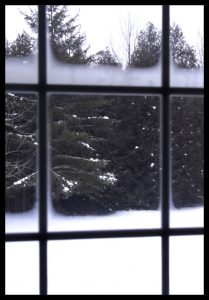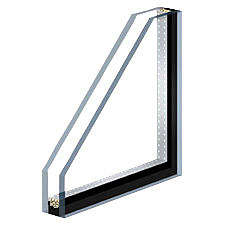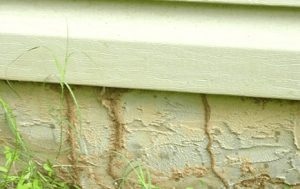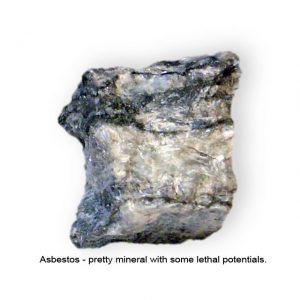
Double-pane windows have a layer of gas (usually argon or air) trapped between two panes of glass that acts as insulation to reduce heat loss through the window. Other types of gas used in this space have various effects on heat gain or loss through the window. Some windows also have a thin film installed between panes that separates the space between the panes into two spaces, further reducing heat loss and heat gain through the window.

Silica gel has an immense surface area, approximately 7,200 square feet per gram, which allows it to absorb large amounts of water vapor. As the sealant protecting this space fails over time, increasing amounts of moisture-containing air will enter the space between the panes, and the silica pellets will eventually become saturated and will no longer be able to prevent condensation from forming.

Failure Factors
Windows on the sunny side of a home will experience larger temperature swings, resulting in greater amounts of thermal pumping, seal stress and failure rates.
Vinyl window frames have a higher coefficient of expansion resulting in greater long-term stress on the double-pane assembly, and a higher failure rate. Windows also experience batch failure, which describes production runs of windows, especially vinyl windows, that are defective, meaning that the pane assemblies have been manufactured with seals that have small defects that will cause the window to fail prematurely.
The Nature of Damage
If it’s allowed to continue, window condensation will inevitably lead to irreversible physical window damage. This damage can appear in the following two ways:
- riverbedding. Condensed vapor between the glass panes will form droplets that run down the length of the window. Water that descends in this fashion has the tendency to follow narrow paths and carve grooves into the glass surface. These grooves are formed in a process similar to canyon formation.
- silica haze. Once the silica gel has been saturated, it will be eroded by passing air currents and accumulate as white “snowflakes” on the window surface. It is believed that if this damage is present, the window must be replaced.
Detecting Failure
Condensation is not always visible. If the failure is recent, a failed window may not be obvious, since condensation doesn’t usually form until the window is heated by direct sunlight. Windows in the shade may show no evidence of failure, so your inspector will disclaim responsibility for discovering failed double-paned windows.
Recommendations for Failed Windows
According to industry experts, the glazing assembly can be replaced approximately 75% of the time. Occasionally, the sashes must be replaced, and only about 5% of those cases require that the entire window be replaced.
Be aware that there are companies that claim to be able to repair misty windows through a process known as “defogging.”
This repair method proceeds in the following order:
- A hole is drilled into the window, usually from the outside, and a cleaning solution is sprayed into the air chamber.
- The solution and any other moisture are sucked out through a vacuum.
- A defogger device is permanently inserted into the hole that will allow the release of moisture during thermal pumping.
There is currently a debate as to whether this process is a suitable repair for windows that have failed, or if it merely removes the symptom of this failure. Condensation appears between double-paned windows when the window is compromised, and removal of this water will not fix the seal itself. A window “repaired” in this manner, although absent of condensation, might not provide any additional insulation. This method is still fairly new and opinions about its effectiveness range widely. Regardless, “defogging” certainly allows for cosmetic improvement, which is of some value to homeowners. It may also reduce the potential for damage caused by condensation in the form of mold or rot. Some skepticism exists about the effectiveness and cost effectiveness of this method of repair.
In summary, condensation in double-paned windows indicates that the glazing assembly has failed and needs repair or replacement. Visible condensation can damage glazing and is the main indication of sealant failure.















